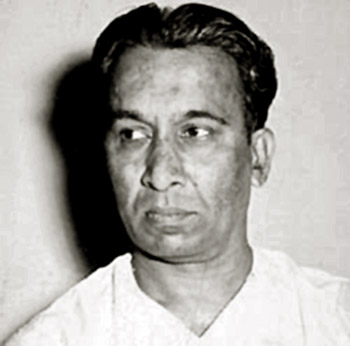 There was a movement of progressive writers in Kannada Literature the 1930s and 1940s. This was led by A. N. Krishna Rao (1908-71). Other important writers of this move¬ment are T. R. Subba Rao, K. S. Niranjana, Basavaraja Kattimani, and Chaduranga. Their favored form was the novel. All these writers were influenced by Marxism. They propagated that literature should serve the needs of social revolution. Accordingly, they wrote about the downtrodden, the exploited class. These writers believed that Indian reality could be explained in terms of class struggle, and they ignored the dominant role played by caste in determining human relations. The result, however, was oversimplification. One of their favorite topics was the problem of prostitution. All of the progressive writers were prolific in their works. A. N. Krishna Rao, leader of the move¬ment, wrote more than 100 novels. They sold very well, chiefly because of the non-moralistic writing when it came to questions like prostitution. However, the limitations of Euro-Marxism in theorizing caste become apparent.
There was a movement of progressive writers in Kannada Literature the 1930s and 1940s. This was led by A. N. Krishna Rao (1908-71). Other important writers of this move¬ment are T. R. Subba Rao, K. S. Niranjana, Basavaraja Kattimani, and Chaduranga. Their favored form was the novel. All these writers were influenced by Marxism. They propagated that literature should serve the needs of social revolution. Accordingly, they wrote about the downtrodden, the exploited class. These writers believed that Indian reality could be explained in terms of class struggle, and they ignored the dominant role played by caste in determining human relations. The result, however, was oversimplification. One of their favorite topics was the problem of prostitution. All of the progressive writers were prolific in their works. A. N. Krishna Rao, leader of the move¬ment, wrote more than 100 novels. They sold very well, chiefly because of the non-moralistic writing when it came to questions like prostitution. However, the limitations of Euro-Marxism in theorizing caste become apparent.
Gopalakrishna Adiga gave expression to the realities of post-Independent In¬dia. Adiga`s Bhavataranga (1946), the first collection of poems, shows the in¬fluence of Bendre. He also had a stint with the progressive writer`s movement in Kattuvevu Navu (1949), his second collection of poems. His fourth collection of poems was the Cande Manddale (1956). He used free verse instead of metrical forms. He also wrote about urban experiences, which had so long been considered unfit for poetic treatment. The broken sentences, sudden jolts, and use of irony, placing side-by-side of mythical characters and situations with pres¬ent-day reality, are some of the characteristics of his new poetry. He rebelled against Kuvempu`s poetry of statements and Bendre`s musicality. He empha¬sized that any experience not realized in concrete terms cannot become literature. Like T. S. Eliot, from whom he learned his art, he also argued that poetry is the outcome of intellect as much as of emotion. He wrote in an epic mode instead of Bendre`s and Kuvempu`s lyrical mode. He argued that poetry should give expression to all levels of experience. The high ideals and dreams people had during the freedom struggle remained unfulfilled, and Adiga`s poetry gave expression to this disillusionment. It was also a great attempt toward the unifi¬cation of sensibility.
His "Bhumigita" (1958), "Vardhamana" (1972), and "Idannu Bayasiralilla" (1975) show full realization of the promises shown in Cande Manddale. "Bhumigita" and "Bhuta" are two of his representative poems. In "Bhumi¬gita," earth is no longer the mother interested in the welfare of her offspring. Instead, she is a stepmother continuously engaged in copulation and childbirth. An individual is left alone to find his or her way in the darkness by the indif¬ferent mother and unknown father. The contrast among the poems of Srikantia, Bendre, and Kuvempu, where earth is considered the mother, is striking. Adiga also suggested that the fate of humankind is that of blinded Oedipus. In "Bhuta," another great poem, Adiga considers the past something that haunts like a ghost. (In Kannada language, bhuta, a Sanskrit loanword, means both past and ghost.) In the process of escaping from it, we have gone West. Now, we have to learn the ways of digging up the significant things of the past as one digs up the golden ore and molds them to suit our personal gods. The poem ends with the great image of the stagnant water of the well evaporating to form clouds. Then it rains, and the land becomes green. Thus, past, present, and future com¬bine to make life whole. In almost all his major poems, Adiga returns to this theme of fragmentation of life in modern times and the ways of making it whole.
He edited Saksi, an influential literary quarterly, for 10 years. His influence on the younger generation was as great as Srikantia`s influence on the previous generation of writers. He recognized the changed sensibility after independence and created a new idiom to express it. His poetry also led to the revaluation and reinterpretation of poetry written by Virasaivite saints of the eleventh and twelfth centuries.













